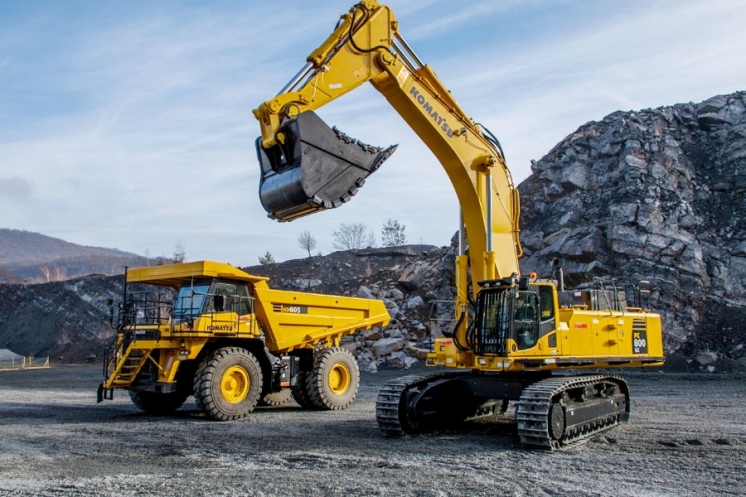THE ROAD TO A CONFIDENT BRAND – KOMATSU

In the 1950s, Komatsu also began manufacturing forklifts, track loaders, motor graders and vibratory rollers. Gradually it began to look around the world and in 1955 it exported its product for the first time outside the Japanese archipelago to Argentina.
It was a monstrous set of multifunctional hydraulic presses weighing 400 tons. The road to a confident brand that can succeed anywhere in the world was open. A few years later, this was confirmed at an industrial exhibition in Beijing and Shanghai, where Komatsu signed a major contract to supply construction machinery to China.
Wheel loader and tracked excavators
By signing a licensing agreement with the engine manufacturer Cummins (1961), the engines used were modernised. In 1965, the wheel loader was added to the “mosaic” product portfolio for the domestic market. At the end of the 1960s, Komatsu also started producing tracked excavators, a concept that proved successful in the local market. The production of these types of machines was accelerated by licensing cooperation with the American manufacturer Bucyrus-Erie, which lasted until 1981.
Brand reputation
The 1960s are often associated with Komatsu President Rioichi Kawaai, who made a significant contribution to the brand’s reputation. It boosted exports to world markets, thus definitively disproving the cliché that Japanese products were cheap and of poor quality. He reinforced the brand’s prestige with other actions: for example, in 1968, a special Komatsu KD60 tracked plough arrived at the South Pole. In terms of global awareness, he was instrumental in growing the brand in the US market. The establishment of business contacts in the USA led to the founding of the so-called Komatsu America Corporation in the early 1970s.
Expansion into the world and HANOMAG AG
In the 1970s, the Komatsu brand continued its global expansion, with branches being established in Australia, Mexico and Singapore. In 1975, the first Komatsu machine ever built outside Japan was produced. It was a D50 bulldozer that was made in Brazil. In the 1980s, the imaginary Komatsu flag was put on the map in other countries: Germany, Belgium or Indonesia. In Germany, Komatsu enters the well-known company HANOMAG AG. Komatsu continues to diversify its production, with high-precision plasma cutting machines and laser machining machines, for example, coming off the line.
In the sign of innovation
The 1990s marked further expansion, especially in Asian markets – Komatsu consolidated its position in India, China, Vietnam, but also in some other European countries and Brazil. In 1999, it launches the world’s largest mechanically driven wheel loader (WA1200).

The unwritten leadership in innovation was confirmed in 2008 with the introduction of the first Komatsu PC200-8 Hybrid crawler excavator with a hybrid drive. In 2015, the world saw the concept of digitally controlled construction – the so-called SMART CONSTRUCTIONS.
Source: Lomy a těžba

